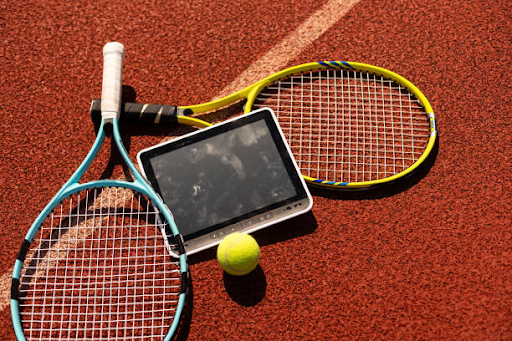Today, talent and training are not sufficient to make a person an athlete. Technology has become important in improving precision, speed and endurance. Skiing and tennis are two sports, which have seen a spectacular change through innovation. Since an advanced ski equipment that adapts to the weather conditions and tennis equipment that is designed with sensors and smart materials, the co-existence between the athletes and technology has entered a new level.
The Technological Revolution in Sports
The sporting world is technologically advanced which has changed how the athletes train, compete and even recover. Contemporary engineering, data analytics and artificial intelligence have changed traditional equipment into high-performance tools. In skiing and tennis in particular these developments are evident.
These days athletes are using smart skiwear and high tech tennis gear to enhance form, limit the risk of injury and allow real time performance monitoring. The outcomes do not consist of quicker running or more powerful serves, but the combination of human capability and accuracy engineering.
Innovation in Skiing: The Rise of Smart Ski Gear
Balance, control, and adjustability to nature being unpredictable has been part of skiing long enough. Nevertheless, the new ski equipment has brought a new level of safety, comfort and performance.
Advanced Materials for Performance and Safety
The current skis are no longer made of wood and metal composites. They include carbon fiber, graphene and nanomaterials which provide light-weight strength and flexibility. These materials are the best in gliding in snow and resistance to harsh conditions. Ski boots have also adopted pressure sensors to check the stance and alignment of the feet which provide real-time feedback to improve technique.
Adaptive Skis and Smart Tracking Systems
Adaptive ski design is one of the most thrilling developments of ski gear. There are also ski gear which are able to automatically regulate stiffness according to the temperature of the snow and the slope of the terrain. In the meantime, embedded sensors monitor the speed, turns, and force distribution, which may be studied using companion apps. This information can give professional skiers a chance to fine-tune the movements in a scientific way.
Ski helmets are also not left behind as they have been made smart with capabilities of GPS, accelerometer, and communication systems that have kept skiers in touch without compromising their safety.
Tennis Enters the Digital Age: Intelligent Equipment for Smarter Play
Skiing has not been left behind in the technological age and so has tennis. The evolution of new tennis technologies has changed the relationship between the racket and the court and the player.
Vibration-Resistant Rackets for Control and Comfort
With the conventional rackets, much of the vibration of the ball impacting to the arm of the player was passed which would make the player feel more fatigued and prone to injury. This has led to the introduction of the modern tennis gears such as rackets with built-in shock absorbing systems, graphite frames that are made of flexible materials. This design assists the players to have accuracy and comfort without losing power.
Smart Sensors and Data Analytics
The current leading rackets are more than a tool, they are data collectors. Embedded sensors measure swing speed, spin rate, point of impact and the trajectory of the ball. This information can be used in concert with smartphone applications that will enable players to study their game and refine their skills. It can be in making offensive grip pressure or perfecting the backhand, but in any case, technology in tennis gear offers professional-grade analysis to even the lowest-level players.
Wearables and Real-Time Performance Monitoring
Wearable technology has been used to revolutionize tennis in other ways other than using rackets. Smart wristbands and smart clothing can monitor the heart rate, muscle work, and hydration, and the devices have been integrated with biometric sensors. The combination of wearable technologies and tennis gears in this merger will allow coaches and players to make evidence-based decisions during training and plays.
The Shared Innovations: When Skiing and Tennis Inspire Each Other
Skiing and tennis are very different in terms of environment and technique, but they have one element of common need; balance, precision and power. There are always intersections of the innovations of ski gear and tennis equipment.
Such design as aerodynamics, e.g., is important in both sports. The same principles are applied by engineers who design streamlined ski helmets to come up with light weight tennis rackets that cut through the air with ease. Similarly, shock-absorbing ski boots and protective clothing material, which have been designed to absorb impact in tennis equipment, are now being used in other applications.
The other area of connection between the two sports is sensor technology. In skiing, pressure and trajectory sensors are used, whereas in tennis, sensors monitor the swing dynamics. Such a common innovation proves that innovations in any industry can easily boost innovation in another.
The Role of Artificial Intelligence and Machine Learning
The artificial intelligence has also advanced ski gears and tennis equipment. The AI platforms process massive amounts of performance data and provide specific training insights.
The idea of AI systems in skiing can forecast the best time to ski, advise on the equipment adaptation, and even advise on rest periods. Machine learning algorithms in tennis estimate the playing style and provide suggestions to improve the style depending on previous match results. These understandings enable athletes to train smarter as opposed to training harder.
Sustainability and the Future of Smart Sports Gear?
With the ever-changing technology, sustainability has come into the limelight. The production of skiing gears and tennis equipment is changing because of the use of eco-friendly materials and energy-efficient production. Composites, biodegradable plastics and renewable fibers are some of the examples that the brands are now making without tampering the performance.
It is probable that the future will have even smart equipment, gear that becomes familiar with the usage patterns, grows in line with them, and becomes integrated in the digital ecosystems. This will allow cleaner, more efficient, and more individualized sporting experience to both the skiers and the tennis players.
Conclusion
Skiing and tennis have had their world changed by technology. It is no longer a skill and a mere instinct as it is now complemented by innovation, science, and precision engineering. Intelligent ski clothing to suit all slopes, sophisticated tennis equipment to record every facet of a swing, and many more options allow athletes to challenge human capabilities nowadays to new levels. Sport and technology are not merely getting married to produce smarter equipment, but rather, to make smarter plays.













